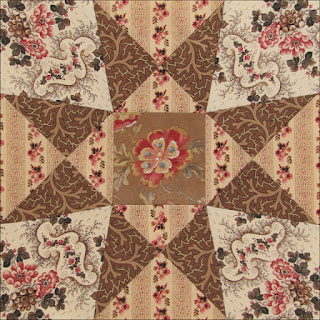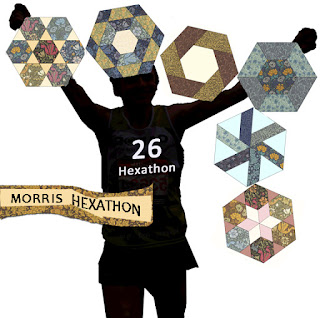Four Eagle Quilt by a member of the Swengel family,
Union County, Pennsylvania
Collection of the State Museum of Pennsylvania
Could the Union Quilt sent to the Washington hospital discussed in last week's post be an Eagle applique?
http://civilwarquilts.blogspot.com/2016/04/a-union-quilt-at-annapolis-hospital.html
http://civilwarquilts.blogspot.com/2016/04/a-union-quilt-at-annapolis-hospital.html
"Union Quilt
Appliqued of red, blue and yellow on white.
Courtesy of Karl R. Kaiser, Esq."
In 1929 quilt historian Ruth Finley called this patriotic pattern “Union” in her classic book, Old Patchwork Quilts and the Women Who Made Them:
"But of all patriotic quilts none is more characteristic than the Union Quilt with four great American eagles spreading their wings across each corner. Red, white and blue are, of course, the colors of the quilt photographed, a touch of gold being added by the shield-shaped patch which forms the body of the bird. This specimen was made during the Civil War when the earlier wide-spread use of the eagle design was revived by the North."

In 1938 Florence Peto published "Old Quilts Tell a Story" in the magazine The American Home.
"Union Quilt is typical Pennsylvania-German design of Civil War period. This bold, vivid example was made c. 1861 by Mrs. Charles Burk. Owned and shown by Mrs. C. Knepper."In 1940 she published the same quilt in The Magazine Antiques:
"The owner of this patriotic item is Mrs. Charles Knepper of Three Springs, Pennsylvania. A similar example has been reported in the possession of Miss Marcia Manning of Williamsport, Pennsylvania."
Had Peto access to all the quilt images we have today she would have known there are dozens of similar examples.
It is amazing how many of these eagle quilts were made but not, as Peto wrote, during the Civil War.
They tend to date from about 1880 through the 1920s and are thought to be influenced by the 1876 Centennial celebration in Philadelphia.
A variety of circular centers and twigs and cherries (or are those olive branches?) are included.
Flags are rarer
The earliest date-inscribed example I have in my files is dated 1879.
An eagle quilt dated 1844 advertised in The Clarion by America Hurrah.

There might be earlier prototypes. The idea of a four-block eagle quilt seems older than the standard eagle we are talking about here.
Quilt from the Binney Collection.
These stereotypical eagles look to be post-1880. Solid color fabrics, strip borders and quilting style are all clues to a post-Civil-War date.And when you find them in Oklahoma or Massachusetts there tends to be a Pennsylvania link.
Collection of the University of Texas
So they may have been called Union Quilts when Finley and Peto were collecting stories about quilts but they don't seem to be the Union Quilts referred to during the Civil War.
See more about eagle quilts at Susan Wildemuth's page:


















































